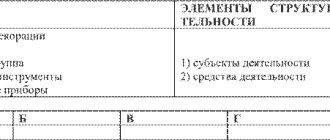Who is an antisocial person
An antisocial person is one who deliberately violates the moral rules and norms established in society. The actions of such an individual are focused on satisfying their needs. A synonym for antisocial behavior is the social indifference of a citizen, therefore, in a person of an asocial type, the motivation to interact with others is reduced or absent altogether.
According to politicians, asocial people lag behind in social development and cannot achieve success in one area or another. However, if necessary, he behaves like a socialized citizen (if there is any benefit for him in such behavior).
Asociality cannot be equated with crime, since there is no criminal element in the behavior of asocial people. Such people can be compared to maladjustments, since they want to isolate themselves from society, and this explains their peculiar associative behavior.
What is asociality?
Asociality is a personality quality that implies behavior that does not comply with the rules of social behavior and moral guidelines. Antisocial people cannot be called lawbreakers. They are usually characterized by indifference, isolation from the public , and their own system of values and priorities that runs counter to established rules. An antisocial person does not want to interact with other people. He rarely makes social contacts.
Given the weak sensitivity of such a person, aggression usually occurs if there is an attempt to impose social norms on her. An antisocial person believes that it is acceptable to react aggressively to various stimuli. To achieve his goals, he is ready to resort to manipulation, lie , and play any role. Antisocial behavior of a person implies adaptation only in certain cases when it is beneficial to him.
Asociality cannot be clearly called a negative concept. For example, introverts can be considered antisocial, since they avoid participation in public life and prefer solitude. But such individuals, as a rule, do not pose a public danger, but are only abstracted from public life.
Characteristics of an antisocial personality
The antisocial image consists of the following characteristics:
- low level of responsibility;
- low moral level, antisocial behavior;
- poor development of the emotional-volitional sphere, emotional callousness;
- poor development of voluntary attention;
- difficulties in verbalizing your feelings and experiences;
- lack of conscience;
- selfishness;
- pathological self-esteem (low or high);
- tendency to use manipulation in communication;
- tendency to lie;
- aggressiveness, conflict;
- impulsiveness;
- frequent mood changes for no apparent reason;
- charisma;
- hypocrisy;
- isolation;
- sociopathy;
- eating disorder;
- insomnia;
- the desire to engage in some type of activity alone;
- social contacts of a person are reduced to a minimum;
- the circle of friends of a person leading an antisocial lifestyle is very narrow;
- lack of desire to make a pleasant impression on one or another group of people;
- a tendency to communicate with people who have deviations from the norm (drug addicts, alcoholics).
Social circle of an antisocial
An antisocial person cannot be considered an antisocial subject, because he does not set a goal to cause harm to others.
What does an antisocial lifestyle mean?
The social way of life familiar to everyone is a certain set of actions that a person performs throughout his life:
- gets an education
- works,
- communicates with friends,
- creates a family,
- raises children.
The opposite lifestyle is behavior that is contrary to social norms. Those who lead such a lifestyle consciously or unconsciously oppose themselves to society and live contrary to established norms and canons.
Often such a way of life is destructive in relation to others and because of this, a negative attitude has formed towards asocial individuals in society. The opinion was formed that those:
- those who do not work provide for themselves through illegal means;
- those who do not communicate with others do so for mental reasons;
- those who do not start a family and raise children do so because of problems with violence on their part.
This is true, but not always. Such manifestations are more often characteristic of misanthropes - those who have developed hatred of others. They also have an asocial lifestyle, but it develops against the background of a different worldview.
The reasons for the opposite of a social way of life often do not depend on the will of a person. Its development can be facilitated by:
- lack of livelihood,
- absence of home,
- problems in relationships with family,
- development of addiction to gambling, alcohol or drugs.
In any of these cases, a person needs support. But due to the negative attitude from society, he does not receive it, becoming more and more immersed in problems without the ability to overcome them.
A person has little chance of returning to normal life; a persistent lifestyle is formed, which increasingly contradicts established norms.
Manifestations of asociality
Signs of asociality can appear at different times. Most often, examples of such behavior occur in adolescence, but sometimes an antisocial personality manifests itself already in childhood. Also, antisocial phenomena can be a consequence of certain changes in the life of an adult.
In childhood
The following are considered antisocial manifestations in childhood:
- child's aggressiveness and irritability;
- the child's tendency to throw tantrums;
- deviations in behavior, the desire to resist the demands of adults and society;
- the child’s tendency to deceive peers and parents;
- decreased cognitive interest and learning motivation;
- lack of friends and desire to communicate;
- conflict, rudeness in communication, pugnacity;
- running away from home, vagrancy, communication of a child with criminal groups;
- tendency to steal;
- tendency to blackmail and manipulation;
- sadistic tendencies;
- animal abuse.
To prevent negative signs from developing into an antisocial lifestyle, psychological and pedagogical correction must begin already in preschool and primary school age.
Antisocial girl
During adolescence
In adolescent psychology, signs of antisocial behavior are more widely represented than at any other age. This:
- low socio-psychological status of a teenager in a group of peers;
- poor development of communication skills;
- belonging to certain subcultures;
- musical fanaticism;
- love of risk, committing rash acts;
- lack of trust and sincerity in communication with parents;
- conflictual communication with relatives, defending one’s interests in a rude manner;
- disregard for parental authority;
- refusal to perform a minimum set of household responsibilities;
- poor development of cognitive interest and educational motivation, absenteeism from school;
- interaction with criminal authorities and antisocial associations;
- committing illegal acts (petty hooliganism, theft, robbery, violent acts);
- auto-aggression, self-harming behavior (a teenager tries to cope with emotional experiences through physical pain);
- suicide attempts;
- feeling of impunity;
- vagrancy, homelessness;
- promiscuous sexual contacts, tendency to sexual perversions;
- conformism.
In adults
In adults, antisocial elements in behavior manifest themselves as follows:
- selfishness;
- the desire for self-realization and self-affirmation at the expense of other people;
- lack of ability to experience shame and guilt;
- lack of order in life (frequent moving, lack of emotional attachments to loved ones, changing jobs and areas of work);
- refusal of marriage and procreation;
- waiver of alimony obligations and timely repayment of loan debts;
- lack of motivation to work, refusal of employment or poor performance of one’s job duties;
- habit of being late;
- disrespectful attitude towards others, aggressiveness, conflict;
- ignoring the moral principles of society, immoral behavior;
Antisocial attitude towards successful people
- committing minor illegal acts;
- the associative nature of the experience of emotions (joy and grief are expressed equally).
Antisocial teenagers
Most often, antisocials are teenagers. They take pride in their actions and impunity, seeking participation or forming their own rebellious groups. Peer support provokes a belief in one’s own specialness.
Popular expressions are: defiant communication with older people, refusal to fulfill school and household duties, rudeness. As the level of aggression increases, the forms of manifestation also change: thefts, fights and other criminal activities, running away from home, sexual relations.
Antisocial behavior is not necessarily limited to children from disadvantaged families. There are many factors:
- family problems;
- influence of comrades;
- romantic perception of the image of a rebel;
- strictness of parents or guardians;
- physical problems due to illness;
- personal degradation provoked by poor upbringing and example, poverty;
- psychological addictions;
- religious cults;
- the desire to assert oneself and the lack of other ways;
- fanaticism, imitation of the antisocial behavior of an idol;
- influence of subculture.
Often, deviant behavior is the result of the actions of another person: physical punishment at home or violence. Often teenagers focus aggression not only on others, but also on themselves. They inflict scratches, cuts and burns on themselves. With the help of physical pain, such people try to balance mental suffering. Suicide is an extreme manifestation of auto-aggression. It is necessary to help a child (your own or someone else’s) in such cases in a timely manner.
Types of antisocial behavior
Psychologists offer a classification of antisocial behavior based on the severity of deviations from the norm:
- Introversion is a mild form of asociality, which is based on a weakly expressed need for communication. Such people are burdened by the company of people and love to be alone with themselves. However, this personality trait does not have a negative impact on their attitude towards work. They try not to violate social norms and rules.
- Immoral behavior, which boils down to ignoring the moral principles of society. This type includes parasitism, prostitution, foul language, begging, and vagrancy.
- Various addictions are dependent forms of behavior aimed at avoiding reality. These include workaholism, gambling addiction, drug addiction, alcoholism, substance abuse, anorexia, bulimia, sexual addiction, and a person’s belonging to a particular religious sect. Treatment of addictions is a long process. Even if a person has managed to recover from one addiction, there is a high probability that he will develop another addiction.
- Illegal actions. This type of antisocial behavior includes petty hooliganism, robbery for fun without causing serious bodily harm.
- Delinquent (criminal behavior), based on the commission of illegal actions against third parties for the purpose of one’s own moral satisfaction. Criminal liability is provided for such acts.
- Schizophrenia is an extreme form of asociality, characterized by a lack of constructive social interaction and emotional coldness.
Definition and forms
Criminal acts also relate to antisocial behavior.
An antisocial person is an individual who has a perverted (absent or poorly developed sense of responsibility), operates with low moral values, and does not show any interest in other members of society.
Antisocial behavior is one that contradicts generally accepted morality and social norms.
Antisocial is not always a negative concept. For example, introverts can also be called asocial, because they do not take an active part in the life of society. And if they can be considered as the most minimal manifestation of such behavior, then the maximum is schizophrenic behavior, which is characterized by a lack of empathy and the inability to interact with other people.
There are four forms of antisocial behavior: immoral, addictive, criminal and illegal.
- Addictive behavior is one that is characterized by the need to escape from life's problems. A person becomes fixated on himself, avoids communication with the outside world, plunging headlong into some kind of addiction. Often this is gaming, computer, alcohol or drug addiction, but religious fanaticism or workaholism can also occur. Often, addictive asociality manifests itself in adolescents and people under 25 years of age.
- Immoral form is the presence of behavior that is unacceptable in society from a moral point of view. These include prostitution, begging, and reluctance to work and study.
- The illegal form includes the regular commission of antisocial actions that violate the norms of modern society. This includes fights, hooliganism, vandalism, and theft.
- Criminal antisocial behavior is a one-time or constant commission of actions that are followed by criminal liability. These include fraud, burglary, banditry, rape, murder.
Causes of antisocial behavior
The reasons for the formation of asociality can be divided into 4 groups:
| Psychological | Social | Pedagogical | Medical |
|
|
|
|
Pedagogical and social factors have a greater influence on the formation of asociality. Medical and psychological factors only create the preconditions for the development of a destructive pattern of behavior.
Possible reasons
Growing up in a dysfunctional family can lead to the development of antisocial behavior
Antisocial behavior does not arise out of nowhere; it is a consequence of the influence of certain factors that may have pedagogical, medical or social roots.
Medical reasons include:
Pros and cons of asociality
It is a mistake to believe that asociality is an unambiguously negative phenomenon. This personality trait can have its advantages.
the ability of a person to be different from everyone else;
many brilliant deeds and discoveries were made by antisocials;
the opportunity to realize your creative potential;
a person’s distance from noisy parties and a craving for loneliness contribute to self-knowledge and the study of philosophical issues.
undeveloped empathy;
condemnation of this lifestyle by others;
maintaining an unhealthy lifestyle;
Antisocials often choose illegal ways to earn money
Signs in adults
Antisocial behavior in adults can be a continuation of childhood habits or caused by mental illness, alcohol or drugs. Such people are liberated, they do not know what shame is, and do not understand why they should conform to social norms, namely: obey the laws, be faithful to their wife or husband, adhere to the rules of ethics, work, take care of children. A frequent development of events is that they end up on the street.
Asociality is a universal phenomenon. There are groups of wealthy people who have chosen atypical lives and ways of earning income. These are the creators of the porn industry, drug dealers, extortionists, elite prostitutes, brothel owners and similar elements.
There is also a positive direction of deviation. We are talking about geniuses whose actions and lifestyle are significantly different from the behavior of other people. As a rule, those around you are puzzled by what is happening: refusal of comfort, pickiness, spending time alone, shockingness and capriciousness. For example, Albert Einstein, Claude Monet, Joseph Brodsky.
Diagnosis and treatment
Diagnosis of pathology is carried out by psychiatrists, psychotherapists and clinical psychologists. The main methods of diagnostic work are:
- conversation with the individual, collection of anamnesis;
- conversation between a specialist and family members of the person who applied;
- examination of the patient;
- assessment of speech patterns;
- the use of psychodiagnostic techniques aimed at studying the emotional-volitional sphere, anxiety, character accentuations;
- using projective techniques to identify the client’s repressed emotions.
Based on a comprehensive diagnosis, the specialist selects the most appropriate type of psychocorrection and therapy.
Diagnostics
Read also: Pink color in psychology: meaning
The determination of asociality can be carried out by a clinical psychologist or psychotherapist. A number of methods can be used to reach a diagnosis.
- Initial conversation and examination. The specialist assesses the patient’s condition, his emotionality, behavioral traits, and manner of speech.
- Collection of information about the patient. The doctor studies both medical history and relationships with employers and other people.
- Interview with family members. The psychotherapist communicates with the patient’s close circle and clarifies their opinion about the patient’s psycho-emotional state.
- Psychological testing. The Eysenck questionnaire, anxiety scale and other tests can be used.
- Projective methods aimed at identifying hidden or suppressed emotions in the patient.
If the diagnosis is confirmed and the situation is truly serious, then medication, psychotherapeutic or psychocorrective therapy may be prescribed.
How to communicate with antisocial
Psychologists advise limiting communication with antisocials, since there is a high probability of becoming accustomed to this lifestyle. Antisocials can provoke conflicts through insults and harsh statements. At such moments, it is important to distance yourself and stop communicating.
If a person feels a resource within himself, he can try to pull the antisocial out of the quagmire and help him live a full life. But during such work, it is important to maintain your boundaries and not enter into codependent relationships. It is best to convince the antisocial person of the need to visit a psychologist.
Asya Rakhovich
Psychologist with more than 8 years of experience. Consultant on interpersonal and marital relationships, self-discovery.
Ask a Question
How to get rid of antisociality
To get rid of a destructive behavior pattern, you need to:
- Learn to communicate. You can sign up for training to develop communication skills. Working in a group will help antisocial people practice constructive cooperation techniques. As a result of psychocorrectional classes, a person will learn to enjoy communication.
- To successfully correct an individual’s destructive attitudes, he needs to be involved in collective activities. Only in conditions of collective work will a person learn to feel his importance in achieving a common goal.
- It is useful to communicate with strangers. This develops emotional intelligence.
- The antisocial needs to normalize his self-esteem. People with low self-esteem need to learn to praise themselves for achieved goals. If self-esteem is too high, it is important to learn to be critical of yourself, notice your shortcomings and work to eliminate them.
- It is important to create a positive social environment around yourself. For this, it is useful to start playing sports or some kind of creativity, since these activities involve a group form of organization and communication.
Is this always a bad thing?
If we talk about the classical scientific understanding of this term, asociality is not a vice. Moreover, in some conditions this is even a good thing. Suffice it to recall the monks and hermits who voluntarily refuse active interaction with the rest of society. In some religions, an asocial lifestyle indicates a person’s spiritual enlightenment, a departure from the worldly, as a result of which he acquires a completely different attitude, and sometimes a certain gift. Something similar is still practiced today in some movements of Christianity, Buddhism, etc. But such an example is rather an exception and has nothing to do with what an asocial lifestyle means outside of any religious practices.
Prevention of antisociality
It is important for all parents to remember about preventive measures. To prevent the development of asociality in a child, you need to:
- Broadcast examples of positive social interaction, create conditions for the successful socialization of the baby. Communication with the child should be calm and respectful.
- Teach your child to live according to plan, follow a daily routine, and complete all planned tasks. A school-age child should have household responsibilities for which he or she is responsible. This is the basis for the formation of moral values and attitudes of the individual.
- Pay a lot of attention to the child and his needs in communicating with his parents. Joint leisure of family members and adherence to family traditions promote emotional well-being. This is a necessary condition for the formation of trusting relationships between children and parents.
- For the harmonious development of personality, children benefit from classes in clubs and sections. When choosing a section, you need to take into account the child’s wishes and interests.
- In the event of conflict situations with peers or teachers, parents should help the child understand them, protect his interests, while maintaining objectivity.
- If any individual characteristics of the child bother the parents, they should seek help from a psychologist. The sooner corrective work is started, the higher the likelihood of its effectiveness.
It is easier to prevent any psychological problem than to deal with it later.
Consequences
It is quite difficult to imagine that several thousand respectable citizens suddenly began to lead an asocial lifestyle. However, we can guess what consequences this will have. Some of them will be noticeable only in the long term, while some will be noticeable almost immediately. It is worth listing at least a few.
- Decreased overall health, increased epidemiological danger. In addition to the devastating effects tobacco, alcohol and drugs have on the human body, some people are likely to become less careful about their personal hygiene, which can lead to the growth and spread of dangerous bacteria. Promiscuous sexual intercourse contributes to the transmission of sexually transmitted diseases and also increases the risk of unplanned pregnancy. This situation often leads to either abortion or abandonment of the child immediately after birth.
- The appearance of more homeless and unemployed people on the streets will increase crime rates. The level of crimes, including extremely dangerous ones such as murder and rape, will increase significantly.
- As a result of a decrease in the number of respectable law-abiding citizens, tax revenue will decrease and the share of the shadow economy will increase, which will sooner or later undermine the foundations of the state.










